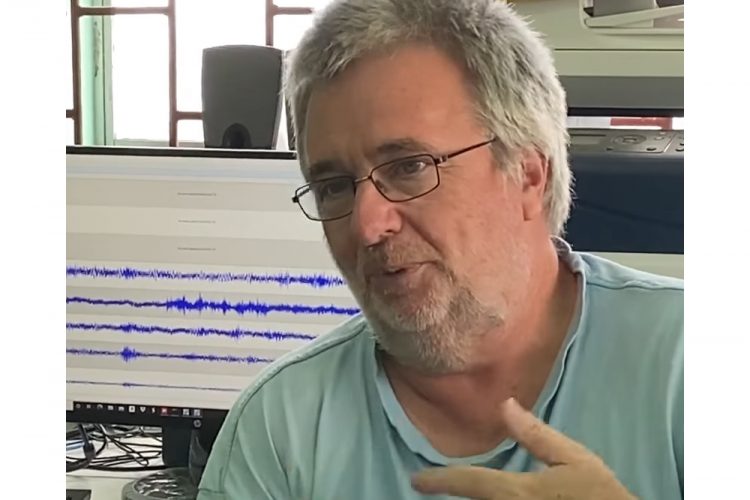La Soufriere alert level moves down to orange

The decision on May 5 to move the alert level for La Soufriere from red to orange was made after discussion and consultation about monitoring techniques, data, and the current state of the volcano.
Volcano-seismologist Roderick Stewart of the University of the West Indies (UWI)-Seismic Research Centre (SRC), who was a guest on the Round Table Talk programme on VC3 on Wednesday said that the main reason the alert level was lowered is that the volcano has been quiet since its last eruption on April 22, in that very little seismic activity has been picked up. This is different to the period, between April 9 and 22, when the volcano had over 30 explosions.
“…Even if there is a restart, as the scientific team we are confident that there will be precursors to that restart and even if there’s not precursors it will only affect the red zone, it really will not affect the orange zone,” the scientist said.
“…The recommendation to go to orange is based on an awful lot of discussion, consultation about the different monitoring techniques, different data we’ve got and the current state of the volcano and it really does reflect the status we are in at the moment,” Stewart revealed.
Professor Richard Robertson, who was also a guest on the programme explained that in St Vincent the alert levels are the “mechanism by which we could respond as scientists that also indicates to the authorities and to the public what we think is happening to the volcano.”
And there has to be such a mechanism where they go up and down if necessary, otherwise it may make it difficult to respond to changes when needed.
He noted, “…in red we say it’s erupting, it’s explosively erupting, it’s doing a lot of nasty things. Once it stops doing that then we have to decide what are the chances of it going to stay in that state.”
“…You can’t keep in this heightened state because if you’re in red it means that it’s supposed to be explosively erupting, and if it’s no longer doing that then you naturally have to move down,” the Professor said.
“…If you stay in red when you’re not erupting what happens when it actually starts erupting, you don’t have anywhere else to go,” he also explained.
Given their observations during monitoring, “we think in our estimation that it really doesn’t make it necessary for us to stay at this higher level,” but rather, “for us to go down with the intention that if it does move to a different state, we can move up, and because of the systems in place the public and the authorities and the Government could respond and make sure people not in harm’s way if it changes.”
Beyond the low levels of seismicity, scientists have also noted a few daily sulphur dioxide (SO2) measurements from the plume streaming from the volcano that indicate an above 1000 tons average of sulphur dioxide. This points to gas-rich magma being close to the surface and degassing. While the numbers need context to be interpreted, Stewart revealed, it is not what would be recorded if the volcano that had gone “totally quiet”. “It needs to be down around the
100 level,” Stewart explained.
“…When it degasses it often builds up pressure and causes earthquakes. That’s not happened here, so this suggests that we’ve got an open vent and that is probably a good thing because pressure doesn’t build up,” the scientist disclosed.
In order to verify the status of matters, the scientists will have to take a look in the crater, using a helicopter, under controlled conditions. They will not be venturing up the volcano on foot due to the danger.
Beyond the possibility of an eruption with less than 24-hour notice, an additional factor that also makes the red zone a no-go at this time is a secondary hazard, namely lahars or mudflows. These dangerous threats have been continuously recorded on the flanks of the volcano as the rain falls, and occurrences of these lahars are not expected to end in this rainy season. The flows, which can be warm from hot deposits left on the volcano, are particularly dangerous for the fact that they contain ash, and debris such as boulders and trees. This week, scientists also observed boulders up to 5m (15 feet) in diameter coming down lahars in Wallibou.









